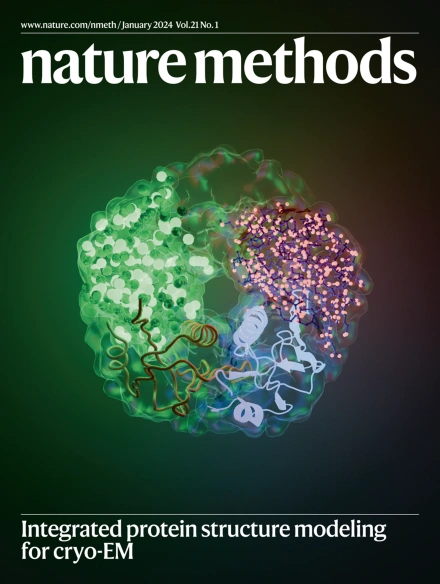Directed evolution of adeno-associated virus for efficient gene delivery to microglia
IF 36.1
1区 生物学
Q1 BIOCHEMICAL RESEARCH METHODS
引用次数: 37
Abstract
As the resident immune cells in the central nervous system (CNS), microglia orchestrate immune responses and dynamically sculpt neural circuits in the CNS. Microglial dysfunction and mutations of microglia-specific genes have been implicated in many diseases of the CNS. Developing effective and safe vehicles for transgene delivery into microglia will facilitate the studies of microglia biology and microglia-associated disease mechanisms. Here, we report the discovery of adeno-associated virus (AAV) variants that mediate efficient in vitro and in vivo microglial transduction via directed evolution of the AAV capsid protein. These AAV-cMG and AAV-MG variants are capable of delivering various genetic payloads into microglia with high efficiency, and enable sufficient transgene expression to support fluorescent labeling, Ca2+ and neurotransmitter imaging and genome editing in microglia in vivo. Furthermore, single-cell RNA sequencing shows that the AAV-MG variants mediate in vivo transgene delivery without inducing microglia immune activation. These AAV variants should facilitate the use of various genetically encoded sensors and effectors in the study of microglia-related biology. Recombinant adeno-associated virus tools for enhanced microglial transduction in mice are reported. These viruses can be used to express functional reporters or genome editing tools with high microglial specificity, with the help of microglia-specific Cre lines.

定向进化腺相关病毒,实现向小胶质细胞的高效基因递送
作为中枢神经系统(CNS)中的常驻免疫细胞,小胶质细胞能协调免疫反应并动态地构建中枢神经系统的神经回路。小胶质细胞功能障碍和小胶质细胞特异性基因突变与许多中枢神经系统疾病有关。开发有效、安全的转基因载体将促进对小胶质细胞生物学和小胶质细胞相关疾病机制的研究。在此,我们报告了发现的腺相关病毒(AAV)变体,这些变体通过 AAV 外壳蛋白的定向进化介导高效的体外和体内小胶质细胞转导。这些AAV-cMG和AAV-MG变体能够高效地将各种基因载荷送入小胶质细胞,并实现足够的转基因表达,以支持体内小胶质细胞的荧光标记、Ca2+和神经递质成像以及基因组编辑。此外,单细胞 RNA 测序显示,AAV-MG 变体在体内介导转基因递送时不会诱导小胶质细胞免疫激活。这些 AAV 变体将有助于在小胶质细胞相关生物学研究中使用各种基因编码的传感器和效应器。本研究报告了用于增强小鼠小胶质细胞转导的重组腺相关病毒工具。在小胶质细胞特异性 Cre 株的帮助下,这些病毒可用于表达具有高度小胶质细胞特异性的功能报告或基因组编辑工具。
本文章由计算机程序翻译,如有差异,请以英文原文为准。
求助全文
约1分钟内获得全文
求助全文
来源期刊

Nature Methods
生物-生化研究方法
CiteScore
58.70
自引率
1.70%
发文量
326
审稿时长
1 months
期刊介绍:
Nature Methods is a monthly journal that focuses on publishing innovative methods and substantial enhancements to fundamental life sciences research techniques. Geared towards a diverse, interdisciplinary readership of researchers in academia and industry engaged in laboratory work, the journal offers new tools for research and emphasizes the immediate practical significance of the featured work. It publishes primary research papers and reviews recent technical and methodological advancements, with a particular interest in primary methods papers relevant to the biological and biomedical sciences. This includes methods rooted in chemistry with practical applications for studying biological problems.
 求助内容:
求助内容: 应助结果提醒方式:
应助结果提醒方式:


